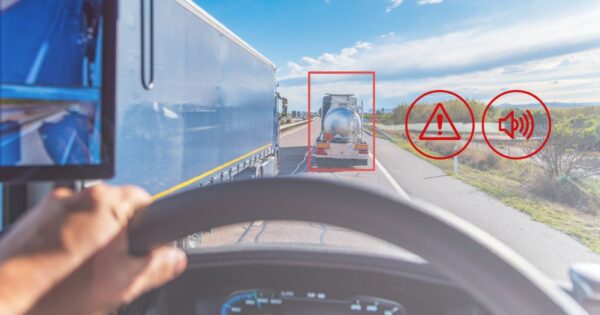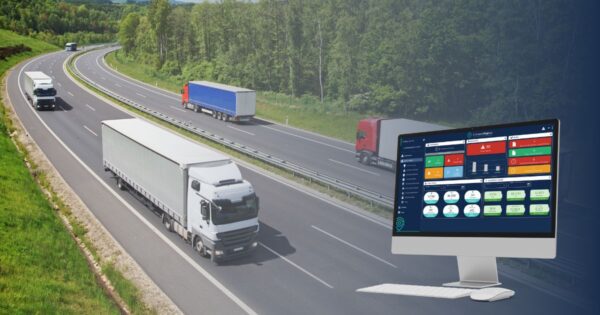Presently the most promising alternatives to fossil fuels are the following options:
- Renewable diesel (biofuel)
- E-fuels
- Natural gas
- Battery electric
- Hydrogen fuel cell
Renewable diesel: One of the more common alternative fuels used by commercial fleets. A non-fossil fuel made from organic waste such as vegetable oil and animal fats. US production has skyrocketed by more than 90% in 2022 to 2.1 billion gallons. To produce renewable diesel soybeans are used, as demand grows it is likely to have knock-on effects on major US crop markets, primarily competing with corn for farmland.
During production, impurities are removed from the raw materials which are then hydrotreated at a high temperature. Producing a colorless and odorless fuel of an even quality that has an identical chemical composition to fossil diesel. However, the production process is costly, making it an expensive fuel source. However, a major benefit of renewable diesel is the fact that it can be used in existing heavy-duty diesel engines without any modification. The US Department of Energy reports that renewable diesel reduces carbon dioxide by 4.2% compared to conventional diesel.
E-fuels: These are different from biofuels and are fuels in gas or liquid form created using renewable or decarbonized electricity. They are produced by using electricity (preferably renewable) to split water into hydrogen and oxygen. The hydrogen is then combined with carbon dioxide to make drop-in hydrocarbons like diesel and methane. However, the production of e-fuels is inherently inefficient, converting half of the energy in the electricity into liquid or gaseous fuels at best.
Examples of e-fuels include e-diesel, e-methane, e-kerosene, and e-methanol. The main benefit is unlike biofuels they don’t put a strain on food production, biofuels are cited for the increased cost of food grains, oilseeds, and vegetable oils. When comparing e-fuels to a battery-electric truck they’re still 15% more expensive in a best-case scenario.
Another argument against e-fuels is that they’re giving industry alternatives to radical disruption and slowing the innovation cycle, ultimately lowering climate-positive momentum. E-Fuels serve as a bridge technology until major breakthroughs in e-mobility (the concept of using electric powertrain technologies, to enable the electric propulsion of vehicles and fleets), and hydrogen happen – which could take a while.
Natural gas: Natural gas comes in two forms:
- Compressed natural gas (CNG): Natural gas, compressed to less than 1% of its volume (stored onboard the vehicle at a pressure of up to 3,600 pounds per square inch) at standard atmospheric pressure. Offering equivalent fuel economy as a conventional gasoline vehicle. However, the useability of CNG is limited, and best used in applications that stay within a region supported by reliable CNG fueling.
- Liquified natural gas (LNG): Better for long-haul trucking however, because of storage requirements and high production costs its adoption for commercial applications has been limited. The production process involves purifying the natural gas and super-cooling it to -260°F to turn it into a liquid, to maintain it in the liquid state it needs to stored in expensive cryogenic tanks.
The three types of natural gas vehicles (NGV):
- Dedicated: Vehicles designed to run only on natural gas.
- Bi-fuel: Vehicles have two separate fueling systems, enabling them to run on either natural gas or gasoline.
- Dual-fuel: Vehicles have fuel systems that run on natural gas, with diesel used for ignition assistance. Traditionally, this configuration is limited to heavy-duty vehicles.
The biggest downfall to seeing greater adoption of natural gas as a fuel source is that the driving range of NGVs is generally less than that of comparable diesel or gasoline vehicles. This is caused by the lower energy density of natural gas. The range of NGVs can be increased by installing extra storage tanks, however, the additional weight can limit cargo capacity.
Battery electric: The cost to run an electric vehicle is lower than that of a fossil-fueled vehicle, however, electric vehicles are significantly more expensive to purchase. But the additional benefits of improved fuel economy, lower fuel costs, and reduced emissions might appeal to fleet operators. In addition, operators can choose between three types of electric vehicles, they include:
- Battery-electric vehicles (BEVs): In the case of battery-electric trucks (BETs), specifically 4×2 tractors with an average weight of 30 tons can travel approximately 300 km (186 miles). This vehicle type always runs off a battery fuel source.
Comparing a BET to a truck powered by e-diesel, the e-diesel truck would emit approximately three times more greenhouse gases (GHG), over the course of its life. A BET will still produce significantly less GHGs in its lifetime, even taking into consideration the higher manufacturing emissions to produce a BETs battery. In a best-case scenario, where 100% renewable energy is used to produce the e-fuel and BET charging, 41% more emissions are generated by the e-diesel truck compared to the BET.
- Plug-in hybrid electric vehicles (PHEVs): Use an internal combustion engine and an electric motor that uses energy stored in a battery (charged by plugging into a power source). The benefit of a PHEV truck is its ability to run on classic fossil fuels for long-haul trips, and when entering low-emission urban zones, the truck can be swapped into zero-emission mode.
Furthermore, the benefit of a PHEV over a BEV truck is that they aren’t as constrained by driving range issues, or the lack of charging station infrastructure. As more people adopt PHEVs, more demand to be able to utilize the electric battery will result in greater access to charging stations, which also benefits BEVs.
- Hybrid electric vehicles (HEVs): Very similar to PHEVs, using an internal combustion engine and one or more electric motors. The vehicle is fueled with gasoline to operate the internal combustion engine, and instead of charging the battery by plugging into a power source, it’s charged through regenerative braking.
Hydrogen fuel cell (FCEV): Instead of being charged from an external source, they produce their own electricity on board – when the hydrogen stored in the vehicle meets an electrochemical cell. The only byproduct emitted is water vapor. Roger Alms of Volvo shares,
“Hydrogen-powered fuel cell electric trucks will be especially suitable for long distances and heavy, energy-demanding assignments”.
The faster refueling and greater range of FCEV give them an advantage over battery-electric. Regarding refueling, a long-haul, Class 8 truck with a 100-kilogram hydrogen tank can refuel about 15x faster than a 1-2 megawatt-hour battery of a battery-electric equivalent. Cutting cross-country drive time by up to 35%, due to decreased dwell time and fewer required stoppages. Furthermore, the hydrogen refueling market in the EU is projected to grow 105% per annum by 2035. However, presently hydrogen refueling is limited in the EU compared to battery-electric, as of the end of 2021, there were just 228 hydrogen stations across Europe, mainly in Germany, France, the UK, Switzerland, and the Netherlands. This limitation is of a similar nature in the US, with Hyzon attempting to build a network and bring hydrogen costs down to parity with diesel.
When comparing hydrogen (sold per kilogram) to gasoline (by the gallon), The energy in one kilogram of hydrogen is equal to one gallon of gasoline. However, hydrogen per kilogram can travel 60 miles versus a gallon of gasoline traveling 25 miles (household vehicles). The issue is the cost per kg of hydrogen averages $13. Producing hydrogen is done 95% of the time through steam reforming of natural gas. The Department of Energy is aiming to increase hydrogens fuel efficiency to 100 miles per 1km and within the next decade wants to reduce the cost of 1kg of clean hydrogen to $1 per kg.








